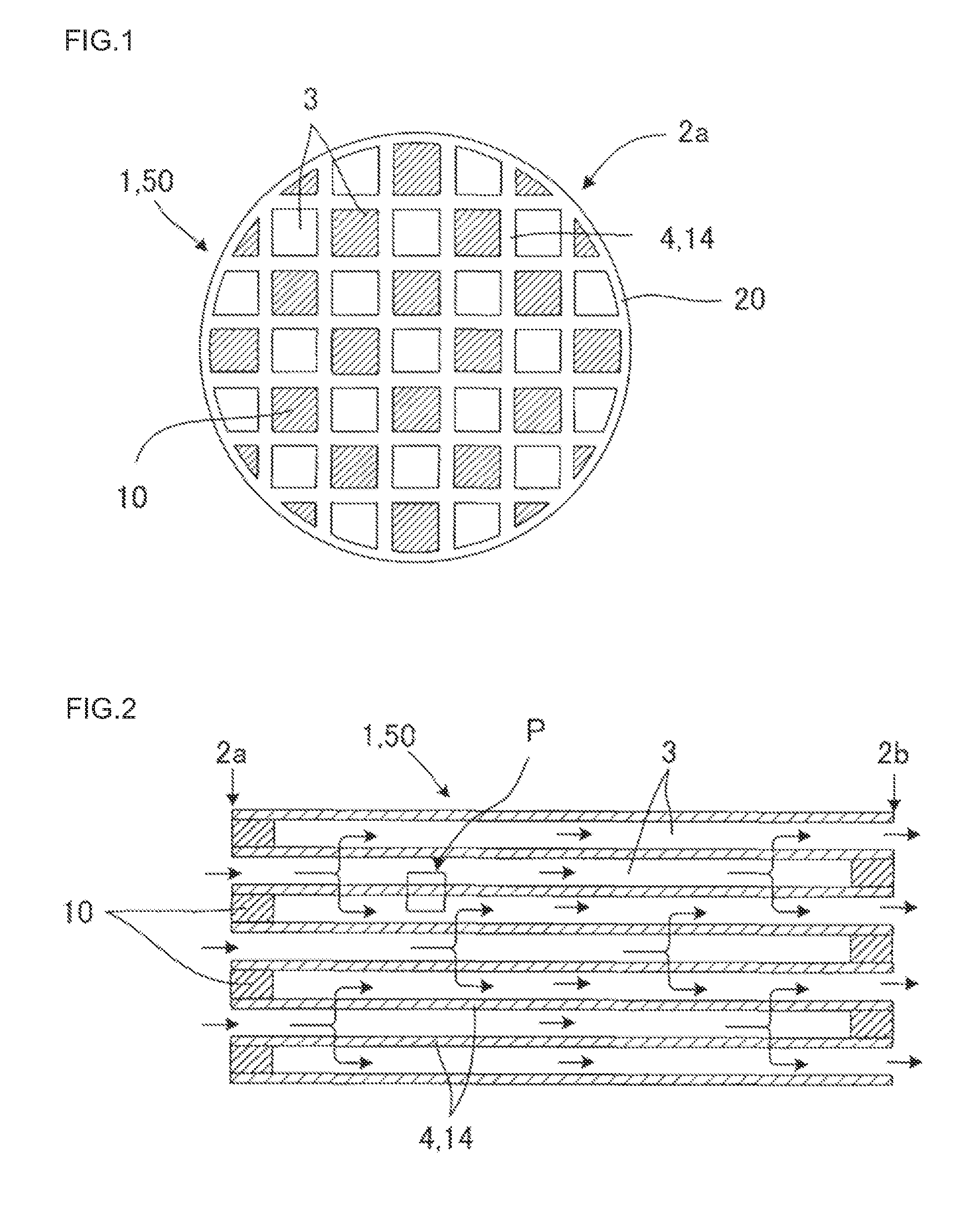Honeycomb catalytic article
a catalytic article and honeycomb technology, applied in the field of honeycomb catalytic article, can solve the problems of hysteresis with respect to the total amount of pm deposition, rapid rise in pressure loss, and high cost, and achieves the effects of reducing the amount of pm deposited, reducing the amount of pm oxidation, and increasing porosity
- Summary
- Abstract
- Description
- Claims
- Application Information
AI Technical Summary
Benefits of technology
Problems solved by technology
Method used
Image
Examples
example
[0081]Hereinbelow, the present invention will be described more specifically by Examples. However, the present invention is by no means limited to these Examples.
examples 1 to 15
, Comparative Examples 1 to 4
[0082][Manufacture of honeycomb formed article] As the cordierite forming raw material, alumina, aluminum hydroxide, kaolin, talc, and silica were used; and, to 100 parts by mass of the cordierite forming raw material were added 13 parts by mass of a pore former, 35 parts by mass of a dispersion medium, 6 parts by mass of an organic binder, and 0.5 parts by mass of a dispersant, followed by mixing and kneading to them prepare kneaded clay. Water was used as the dispersion medium, coke having an average particle size of 10 μm was used as the pore former, hydroxypropylmethyl cellulose was used as the organic binder, and ethylene glycol was used as the dispersant. Then, the kneaded clay was subjected to extrusion forming using a predetermined die to obtain a honeycomb formed article having a quadrangle cell shape and a circular columnar (circular cylindrical) whole shape.
[Manufacture of plugged honeycomb structure] After the honeycomb formed article was sub...
PUM
| Property | Measurement | Unit |
|---|---|---|
| porosity | aaaaa | aaaaa |
| porosity | aaaaa | aaaaa |
| pore size | aaaaa | aaaaa |
Abstract
Description
Claims
Application Information
 Login to View More
Login to View More - R&D
- Intellectual Property
- Life Sciences
- Materials
- Tech Scout
- Unparalleled Data Quality
- Higher Quality Content
- 60% Fewer Hallucinations
Browse by: Latest US Patents, China's latest patents, Technical Efficacy Thesaurus, Application Domain, Technology Topic, Popular Technical Reports.
© 2025 PatSnap. All rights reserved.Legal|Privacy policy|Modern Slavery Act Transparency Statement|Sitemap|About US| Contact US: help@patsnap.com



